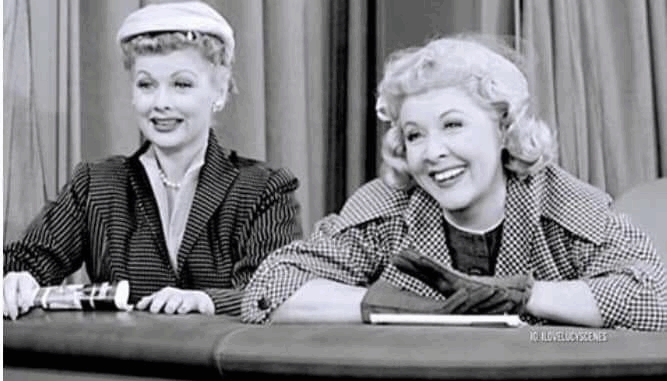
While I Love Lucy is remembered for its humor and heart, the show also stirred serious controversy. Beneath the laugh tracks were bold decisions that pushed the boundaries of what 1950s television—and American society—would tolerate.
🤰 Pregnancy on Prime Time? A National Scandal
In 1952, Lucille Ball became pregnant with her second child. Rather than hide it, the producers made a bold move: they wrote her pregnancy into the show. This was nearly unheard of at the time. CBS executives were so uncomfortable with the idea that they banned the word “pregnant” from the script.
Instead, the characters had to say “expecting,” and the entire storyline was handled with extreme delicacy. Despite the restrictions, the birth episode (“Lucy Goes to the Hospital”) became one of the most-watched TV moments of all time, beating even President Eisenhower’s inauguration.
🌎 An Interracial Couple on American TV
Lucille Ball was a white American woman. Desi Arnaz was a Cuban-born bandleader with a heavy accent. In 1950s America—still steeped in racial prejudice and Cold War suspicion—their pairing was controversial.
Network executives initially opposed casting Desi as Lucy’s husband, fearing viewers wouldn’t accept a “mixed couple” on screen. But Lucille fought for him fiercely. She told CBS: “If Desi doesn’t play my husband, then I won’t do the show.” That bold ultimatum changed TV history.
🎯 The Drama That Made Progress
The drama surrounding I Love Lucy wasn’t just personal—it was cultural. The show challenged societal norms about marriage, race, gender roles, and motherhood. It used comedy to make Americans confront their own discomfort with change.
Today, it’s easy to take for granted the diverse, boundary-pushing shows we see on screen. But it started with Lucy—pregnant on TV, married to a Cuban man, and unwilling to accept “no” for an answer.
“I Love Lucy” didn’t just make people laugh. It made history.
